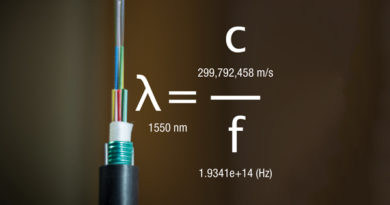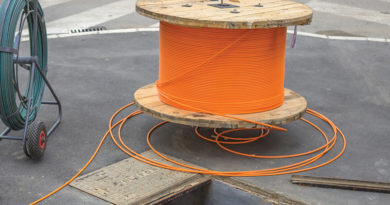Inside Single-Mode Fiber G.657
By Steven Harris
Today’s telecommunication networks are progressing quickly and employing more optical fiber than in our earlier networks. Distributed access architecture (DAA), optical distribution network (ODN), fiber deep and next generation hybrid fiber/coax (HFC) are a few of the architecture examples leveraging high-capacity fiber optics. Single-mode optical fiber (SMF) provides the physical layer foundation for these telecommunication network architectures. As operators deploy more SMF cable in the network, aligning to the latest industry standards and best practices will improve the quality of deployment, along with many other operational benefits.
Many of our industry members have been leveraging SCTE standards and SCTE operational practices for fiber optic networks. In addition, international standards for SMF cable from the ITU Telecommunication Standardization Sector (ITU-T) play an important role in the evolution of our networks.
Traditionally, our networks have aligned, installed, and operated with the widely deployed ITU-T G.652 SMF cable. However, due to densification of fiber in the drop portion of our network and limited space in many other areas of the network, SMF was optimized for future builds where low macrobending loss is required. While there are many ITU-T standards that play a role in our optical networks, the latest G.657 edition for SMF cable further optimizes fiber deployments.
G.657 improves on existing networks that are aligned to the G.652 SMF cable standard. G.652D is the most current sub-category used offering reduced water peak for full optical spectrum operation. However, G.652D has limits on bending radius. There are many engineer-friendly advantages for operators that align to Edition 4 of G.657. G.657 provides improved bending performance that works well in our fiber access networks by reducing attenuation. G.657 allows for easier deployment in the access network where tight areas exist because of miniaturization of enclosures (e.g., SCTE generic access platform), cabinets, pedestals, and terminations. G.657 also works well in FTTH multiple dwelling unit (MDU) deployments.
There are two main categories for G.657, category A (cat A) and category B (cat B). Both cat A and cat B contain sub-categories that apply to next generation fiber networks. They both cover the 1260 nm to 1625 nm range or O, E, S, C and L-optical bands. Cat A is fully compliant with G.652D for long-reach applications in the transport network and access network. Cat A may be used for all G.652D specified networks as it has the same transmission and interconnection properties. Cat A provides improved macrobending losses compared to G.652D. Cat B is not fully compliant with G.652, however, it is aligned to G.657A and G.652D in access networks. Cat B was designed to support very low macrobending losses at a low bending radius for short-reach (< 1000 m) applications. Cat B is designed for near building (e.g., riser) and in building deployments like MDUs or for business service applications.
For long-reach applications in the transport and access applications, cat A provides two sub-categories: A1 and A2. The G.657.A1 allows a 10 mm minimum design radius, while the G.657.A2 allows a 7.5 mm minimum design radius. These are both improvements over 15 mm to 30 mm in G.652.
For short-reach drop applications, cat B provides two sub-categories: B2 and B3. The G.657.B2 allows a 7.5 mm minimum design radius, while the G.657.B3 allows a 5 mm minimum design radius.
Understanding G.657 SMF benefits and categories will allow you to perform better as a fiber installer. To learn more about fiber optics, check out SCTE.org for our Broadband Fiber Installation (BFI) course and/or professional certification.

Table 1. ITU-T G.657 categories
 Steven Harris
Steven Harris
Executive Director, Technical Sales, Learning & Development
SCTE•ISBE
sharris@scte.org
Steve is an international SME and thought leader, and the executive director of education and business development for SCTE·ISBE. He is responsible for overseeing the architecture and evolution of educational programs, credentialing, and customized career progressions, as well as business development and partnerships. His team is responsible for an education library that is now 900+ modules, designed to drive business results. With more than 30 years in education, he has taught much of the content of the library, with a dynamic approach to the delivery of highly complex topics.
Shutterstock




